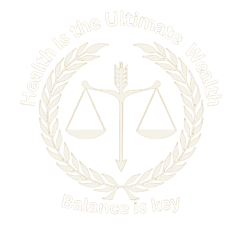Inner-standing Trauma Bonds: Why We Stay in Unhealthy Relationships
Trauma bonds can feel confusing, painful, and hard to escape—but you're not alone. 💔 In this blog post, we break down: What trauma bonds really are and why they form (and why they're not your fault), how to recognize the signs and gentle, empowering steps to start healing.


Inner-standing Trauma Bonds: Why We Stay in Unhealthy Relationships
Have you ever looked back on a relationship and wondered, “Why did I stay so long, even when I knew it wasn’t good for me?” If so, you’re not alone—and what you experienced might have been a trauma bond.
What is a Trauma Bond?
A trauma bond is a strong emotional attachment that forms between a person and their abuser, often as a result of cycles of abuse followed by periods of intense affection or “make-up” moments. This confusing pattern can cause someone to feel deeply loyal and even emotionally dependent on the very person who’s causing them harm.
It’s not about weakness—it’s about survival. Our brains are wired to seek safety, connection, and stability. When love and fear get tangled up together, it creates a bond that feels almost impossible to break.
What Does a Trauma Bond Look Like?
Let’s look at a few real-life inspired examples:
Emma is in a relationship where her partner often belittles her, but after every argument, he apologizes, cries, and promises to change. The affection she receives in those moments feels so intense, she clings to the hope things will get better.
Jared grew up with a narcissistic parent who constantly criticized him but occasionally praised him in ways that made him feel seen. As an adult, he finds himself drawn to partners who treat him the same way, even though it hurts.
Lena left a toxic work environment but still feels guilty and misses her emotionally manipulative boss, even though she knows they were draining her mental health.
These are all signs of trauma bonds—relationships where love is conditional, unpredictable, and tied to emotional pain.
What Causes Trauma Bonds?
Trauma bonds often develop in environments where:
There’s a cycle of abuse – moments of cruelty or manipulation followed by kindness, affection, or remorse.
Emotional neglect or control is present, especially during childhood or early relationships.
The person being hurt believes they need the other person for safety, love, or validation.
There are power imbalances, like in abusive romantic relationships, parent-child dynamics, or toxic workplaces.
The emotional rollercoaster causes the brain to release stress hormones (like cortisol) during conflict and bonding hormones (like oxytocin) during affection. This chemical cocktail can make the relationship feel addictive.
Breaking Free: How to Heal from a Trauma Bond
Healing from a trauma bond takes time, self-compassion, and often support from others. Here are a few steps that can help:
Acknowledge the bond
The first step is recognizing you’re in a trauma bond. Journaling or talking with a therapist can help you explore patterns you might not fully see yet.Set boundaries
Distance—physical, emotional, or both—is often necessary. That might mean going no contact, limiting interactions, or changing your environment.Get support
You don’t have to do this alone. Trauma-informed therapists, support groups, and trusted friends can offer a safe space for you to process and rebuild.Rebuild your self-worth
Trauma bonds often erode our sense of self. Affirmations, mindfulness, and self-love practices can help you reconnect with your inner strength and worth.Understand it wasn’t your fault
This is key: you didn’t choose to be hurt, and staying wasn’t a failure—it was a response to emotional conditioning. You’re not broken; you’re human.
Final Thoughts
Trauma bonds are complicated, painful, and deeply human. If you’re caught in one, please know you’re not crazy or weak—you’re responding the best way you can with the tools you have. The good news is: healing is possible, and you can build relationships rooted in mutual love, respect, and safety.
Be gentle with yourself. The fact that you’re learning about trauma bonds is already a sign of growth. You’re moving toward clarity, strength, and freedom—one step at a time. 🌱
